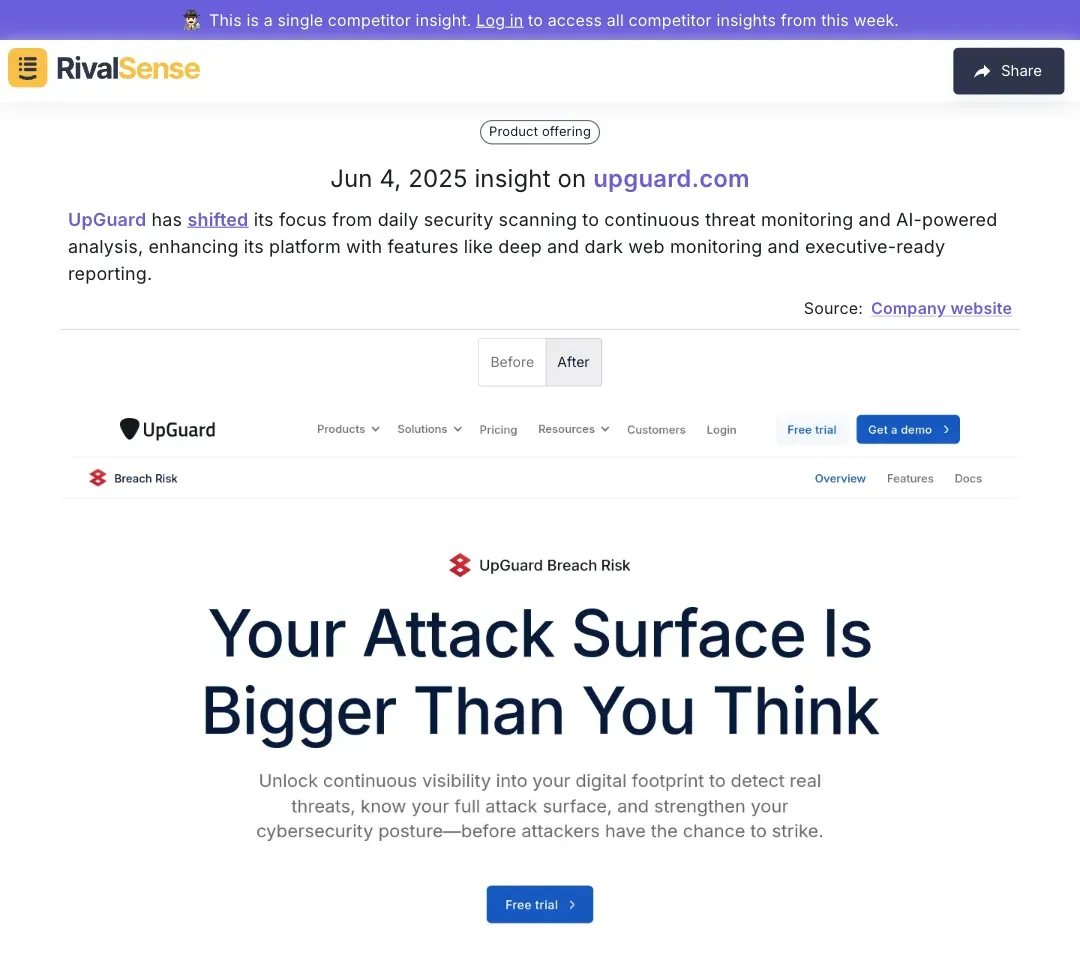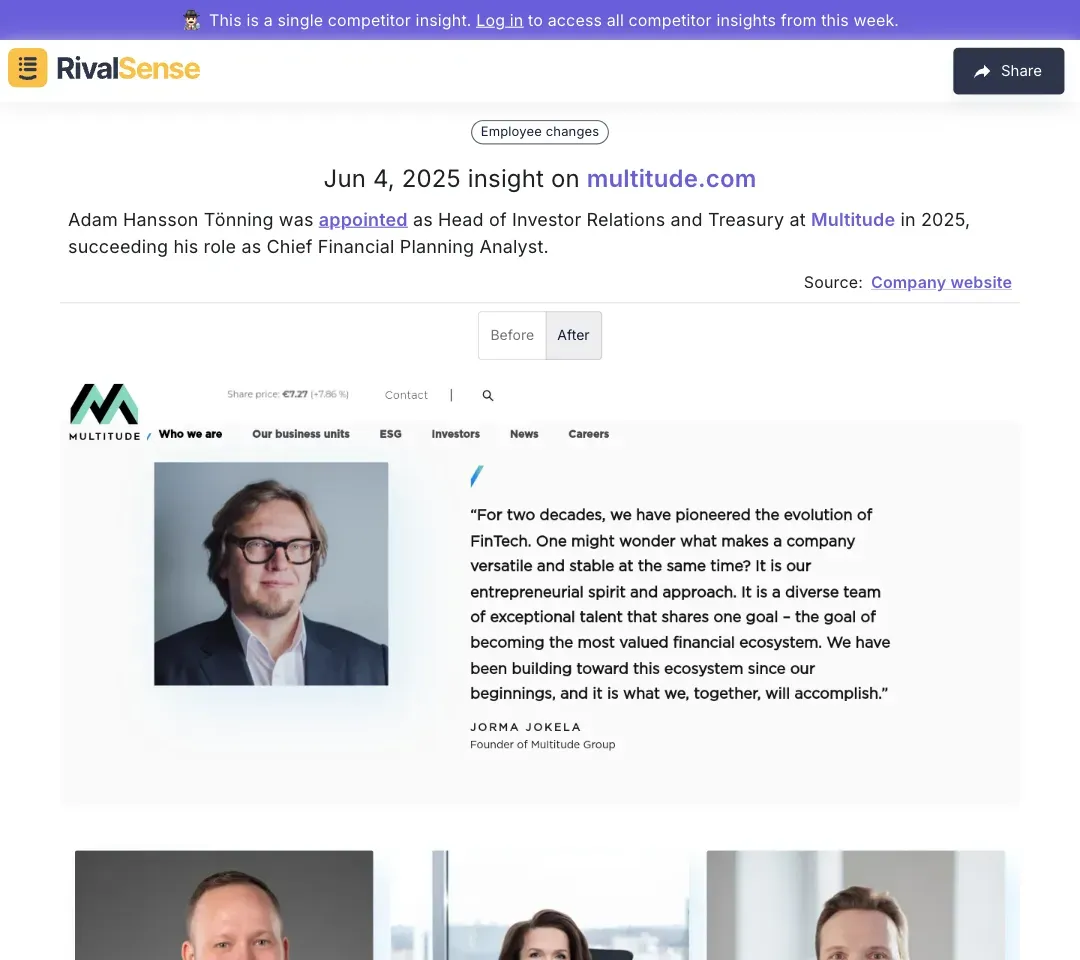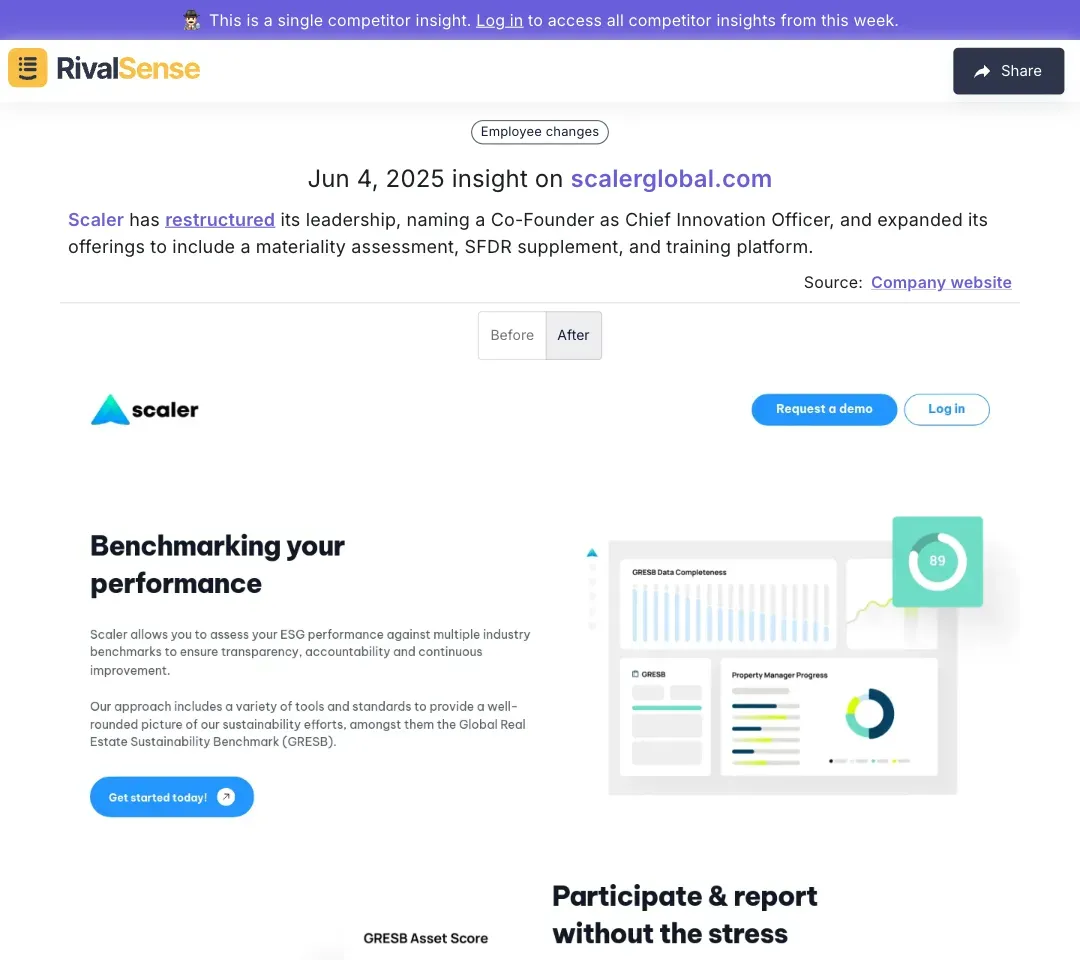Boost CTO Productivity in Medical Aesthetics with Competitive Intelligence
In the rapidly evolving field of medical aesthetics, CTOs must leverage competitive intelligence (CI) to stay ahead. CI involves systematically gathering and analyzing data about competitors, market trends, and technological advancements to inform strategic decisions, going beyond traditional market research by providing actionable insights tailored to your competitive landscape. For technology leaders, this means understanding rival innovations, identifying market gaps, and anticipating consumer preference shifts in real-time.
Advanced tools like AI-driven analytics enable continuous monitoring of competitors' activities, from product launches to regulatory changes. These technologies streamline data collection while enhancing accuracy and relevance for strategic decision-making.
Practical steps to get started:
- Identify Key Competitors: Catalog top medical aesthetics players and monitor their activities
- Leverage CI Tools: Implement automated platforms like RivalSense for data gathering
- Analyze Trends: Track emerging technologies and regulatory impacts
- Benchmark Performance: Compare your R&D against competitors' offerings
- Act on Insights: Refine technology roadmaps using CI findings
Identifying Key Competitors and Market Trends
Understanding your competitive landscape is fundamental in medical aesthetics where innovation cycles accelerate rapidly. Continuous monitoring of direct competitors and alternative solution providers reveals strategic opportunities and threats before they impact your market position.
Effective competitor tracking combines automated tools with human analysis. Real-time alerts for competitor movements paired with industry report analysis create a comprehensive view of market dynamics.
Actionable approach:
- Map Competitor Ecosystem: Identify direct service providers and indirect solution alternatives
- Monitor Innovations: Use SEO tools and social listening to track product launches
- Analyze Consumer Shifts: Study reports on trends like non-invasive treatments and AI integration
✅ Practical Checklist:
- Update competitor lists quarterly
- Automate tracking with CI platforms
- Subscribe to industry reports (e.g., McKinsey)
- Attend medical aesthetics conferences
- Analyze social sentiment monthly
Leveraging Competitive Intelligence for Product Development
Competitive intelligence transforms R&D by revealing unmet market needs and competitor vulnerabilities. By systematically analyzing rivals' product releases, patent filings, and customer feedback, CTOs can prioritize development efforts that deliver competitive differentiation.
One medical aesthetics company discovered through CI that competitors' devices faced criticism for lengthy procedure times. By focusing R&D on reducing treatment duration, they launched a market-leading solution that addressed this pain point.
Avoid these CI pitfalls:
- Don't blindly replicate competitor features without validating market demand
- Resist feature races that compromise meaningful innovation
- Balance competitor analysis with original research
Strategic implementation:
- Monitor competitor product portfolios continuously
- Analyze customer reviews for improvement opportunities
- Prioritize R&D based on validated market gaps
- Adjust roadmaps quarterly using fresh insights
Enhancing Operational Efficiency with Competitive Insights
Operational excellence in medical aesthetics hinges on adopting industry best practices revealed through competitive intelligence. Analyzing competitor workflows, supply chains, and service models uncovers efficiency opportunities that reduce costs while improving patient experiences.
Integrating CI into operational decisions enables evidence-based process improvements. For instance, discovering a competitor's faster appointment system could inspire scheduling upgrades that boost clinic utilization rates.
Quantify CI impact by tracking:
- Time savings in development cycles
- Cost reductions from optimized processes
- Service delivery improvements
Action steps:
- Conduct quarterly CI audits
- Train teams on insight interpretation
- Implement dashboard-based monitoring
- Benchmark against top competitors annually
Building a Competitive Intelligence Framework for Your Team
Establishing a structured CI process ensures consistent insight generation that informs strategic decisions. A well-designed framework transforms sporadic competitor checks into a continuous intelligence operation aligned with business objectives.
Effective CI programs combine clear responsibilities, appropriate tools, and regular knowledge sharing. This creates organizational awareness of competitive threats and opportunities across departments.
Step-by-step framework:
- Define Objectives: Align CI focus with strategic goals (e.g., track pricing changes)
- Assign Roles: Designate team members for collection, analysis, and dissemination
- Select Tools: Combine automated platforms like RivalSense with manual research
- Train Teams: Conduct workshops on source credibility and insight extraction
- Centralize Data: Use shared repositories organized by competitor and category
- Schedule Reviews: Hold monthly CI strategy sessions
- Integrate Insights: Feed findings into product planning and leadership meetings
✅ Implementation Checklist:
- [ ] Set 3-5 CI objectives
- [ ] Assign clear ownership
- [ ] Choose monitoring tools
- [ ] Train all relevant staff
- [ ] Create accessible repository
- [ ] Establish review cadence
- [ ] Connect insights to strategic planning
Real-World Competitive Intelligence Insights
Competitive intelligence delivers tangible strategic advantages across industries by revealing critical competitor movements. These real examples demonstrate how different insight types inform business strategy in medical aesthetics and beyond.
Tracking product evolution helps anticipate market expectations. When UpGuard shifted from daily scanning to continuous threat monitoring with AI-powered analysis, it signaled industry movement toward real-time security solutions:

Why it matters: Product shifts indicate emerging market standards, helping you prioritize R&D investments before customer expectations solidify.
Executive appointments often precede strategic pivots. Adam Hansson Tönning's promotion to Head of Investor Relations at Multitude suggested increased focus on financial communications:

Why it matters: Leadership changes frequently indicate new strategic directions, allowing you to anticipate competitor moves like funding rounds or market expansions.
Organizational restructuring reveals capability shifts. When Scaler appointed a Co-Founder as Chief Innovation Officer while expanding service offerings, it signaled strategic realignment:

Why it matters: Restructuring combined with service expansion indicates growth priorities, helping identify competitive threats in adjacent service areas.
Conclusion: The Future of Competitive Intelligence in Medical Aesthetics
As AI and automation transform competitive intelligence, medical aesthetics CTOs gain unprecedented capabilities to anticipate market shifts. Real-time tracking of technological advancements, regulatory changes, and competitor movements will increasingly separate industry leaders from followers.
Forward-looking technology executives should prioritize AI-driven CI tools that automate insight generation while fostering cross-departmental intelligence sharing. This enables proactive strategy adjustments that capitalize on emerging opportunities before competitors react.
Strategic priorities:
- Adopt AI-powered CI platforms for automated monitoring
- Track startups and emerging technologies continuously
- Encourage cross-industry innovation borrowing
- Build CI-sharing into team workflows
- Maintain agile response capabilities
Transform your competitive strategy today
Try RivalSense for free to automate competitor tracking across product launches, pricing changes, leadership moves, and regulatory updates. Get your first personalized competitor report and start converting market insights into strategic advantages.
📚 Read more
👉 How CodeAcademy's Credit Cut in Digital Marketing Fueled Competitors' Strategies
👉 Instagram Insights: B2B Market Share & Competitor Analysis
👉 Boost Productivity in Fraud Prevention with Competitor Tracking
👉 Decoding Competitor Event Moves: Boost Your Segmentation Strategy
👉 Game Theory in Competitor Analysis: Anticipate Moves and Strategize Like a Pro
